 THE MONACO GRAND PRIX LIBRARY BY ROY HULSBERGEN THE MONACO GRAND PRIX LIBRARY BY ROY HULSBERGEN |
|



|
COOPER |
|
|
Charles Cooper had worked extensively as a racing mechanic in the pre-WWII era. He ended up owning a large garage in Surbiton, and after his son John and his friend Eric Brandon drifted into the 500cc car movement after the war, they laid down a batch of production cars based on their original prototype.
Cooper came to dominate 500cc racing with their light, fast rear-engined cars, and moved up into the racing world in the early Fifties with the Cooper-Bristol F2 car.
Coopers came to dominate F2 and it was only a matter of time before enlarged engines were fitted to the cars for F1 use.
The first two GPs of 1958 were won in Rob Walker's 2l Coopers by Moss and Trintignant; then in 1959 Jack in the ``big'' 2.5 litre works car came good and won the world Championship. He retained this in 1960 and this era was the high-point in Cooper's history, in part due to the close involvement of Brabham and young newcomer Bruce McLaren in the design process.
Cooper were never quite the same force in the 1.5 litre years; the departure of Brabham hit them hard and McLaren found himself excluded from the design of the cars.
Cooper became even more famous because of the Mini Cooper a ``hotted up'' Mini, which became the leading rally car of its day and was all-but unbeatable in small-capacity saloon car races.
After the death of Charles Cooper, the company was sold to the Chipstead Group in 1966. Chipstead were the UK Maserati concessionaires, and it was therefore logical that the first 3-litre F1 Coopers should be Maserati powered. These cars had some success in the first two seasons of the 3 litre F1, but were really too large and heavy to be fully competitive; a bad road-car accident involving John Cooper didn't help, either.
Coopers were no longer dominant in F2 or F3.
BRM power was used for the final serious season in F1 and Alfa and Cosworth F1 prototypes were built before the team finally closed down in 1969.
Grand Prix contested: 129 1950 till 1969
Pole positions: 11
Fastest lap: 13
Victories: 16
1958 ARG - MON
1959 MON - GB - POR - ITA - USA
1960 ARG - HOL - BEL - FRA - GB - POR
1962 MON
1966 MEX
1967 SA
World Championship for Constructors points
| 1958 |
3rd |
31 pts |
|
1964 |
5th |
16 |
1959 |
1st |
40 |
|
1965 |
5th |
14 |
1960 |
1st |
40 |
|
1966 |
3rd |
30 |
1961 |
4th |
14 |
|
1967 |
3rd |
28 |
1962 |
3rd |
29 |
|
1968 |
6th |
14 |
1963 |
3rd |
29 |
|
|
|
|

|
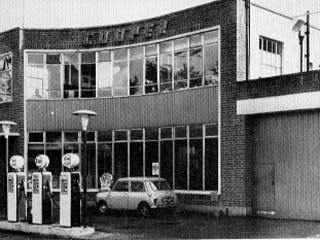
Cooper Garage
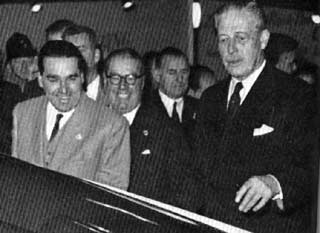
Charles and John Cooper
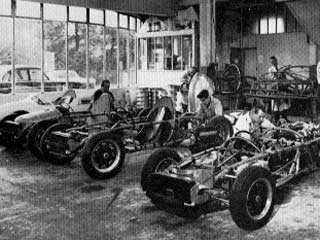
Assembly line
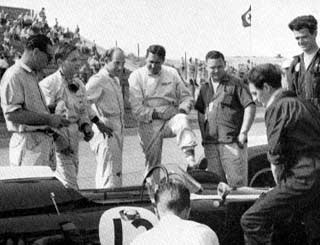
Famous Cooper Team |
Cooper T43 - 1957
Chassis: tubular chassis, transverse leaf suspension, adapted to Walker Team with larger fuel tanks
Engine: Coventry Climax FPF of 1475cc and 1960cc
Drivers: Jack Brabham, Piero Drogo, Ron Flockhart, Stirling Moss, Roy Salvadori, Allessandro de Tomaso, Maurice Trintignant
Results: Ô58: 1st Argentina
|
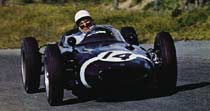 |
Cooper T45 - 1958
Chassis: tubular chassis, wishbone coil suspension in front and rear.
Engine: Coventry Climax FPF 2.2 litre giving 194hp
Drivers: Jack Brabham, Ian Burgess, Stirling Moss, Arthur Owen, Roy Salvadori, Maurice Trintignant
Results: Ô58: 1st Monaco, 2nd Germany, 3rd UK, 3rd WCC |
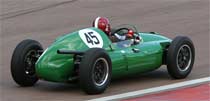 |
Cooper T51 - 1959
Chassis: tubular chassis, wishbone coil suspension in front and rear.
Engine: Coventry Climax FPF of 2495cc
Drivers: Jack Brabham, Tony Brooks, Ian Burgess, Olivier Gendebien, Masten Gregory, Dan Gurney, Phill Hill, Bruce McLaren, Stirling Moss, Roy Salvadori, Harry Schell, Maurice Trintignant, Wolfgang von Trips.
Results: Ô59: 1st WCC, 1st in Monaco, UK, Portugal, Italy, USA |
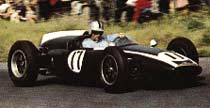 |
Cooper T53 - 1960
Chassis: lower and slimmer, tubular chassis wtih four main tubes, wishbone coil suspension all round
Engine: Coventry Climax FPF of 2.5 litre delivering 250hp, driving through a five speed gearbox
Drivers: Lorenzo Bandini, Jack Brabham, Masten Gregory, Bruce McLaren, Roger Penske, Roy Salvadori, John Surtees
Results: Ô60: 1st WCC, 1st Argentina, Holland, Belgium, France, UK, Portugal. |
 |
Cooper T55 - 1961
Chassis: derivate of the T53
Engine: Coventry Climax FPF of 1.5 litre driving through a six speed gearbox and awaiting the V8 Climax engine
Drivers: Jack Brabham, John Love, Tony Maggs, Bruce McLaren
Results: Ô61: 4th WCC |
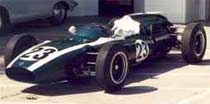 |
Cooper T60 - 1962
Chassis: tubular frame designed to take the V8 engine
Engine: Coventry Climax V8 of 1.5 litre
Drivers: Jo Bonnier, Tony Maggs, Bruce McLaren, John Rhodes
Results: Ô62: 3rd WCC, 1st Monaco |
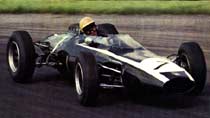 |
Cooper T66 - 1963
Chassis: narrower by moving the fuel tanks and modifications in suspension. The team was now managed by Ken Tyrrell
Engine: Coventry Climax V8 of 1.5 litre
Drivers: Edgar Barth, Jo Bonnier, Tony Maggs, Bruce McLaren
Results: Ô63: 5th WCC |
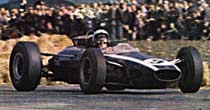 |
Cooper T73/77 - 1964
Chassis: based on the F2/F3 cars with larger fuel tanks
Engine: Coventry Climax V8 of 1.5 litre
Drivers: Phil Hill, John Love, Bruce McLaren, Jochen Rindt
Results: Ô64: 5th WCC, Ô65: 5th WCC |
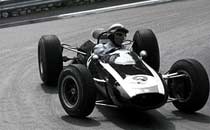 |
Cooper T81 - 1966
Chassis: Coopers first monocoque car comprised of two box side members joined by the floor and bulkheads.
Engine: Maserati 60¡ V12, 3 litre rated at 360hp
Drivers: Chris Amon, Richard Attwood, Jo Bonnier, Vic Elford, Richie Ginther, Jacky Ickx, Guy Ligier, Brian Redman, Jochen Rindt, Pedro Rodriguez, Jo Siffert, John Surtees
Results: Ô66: 1st Mexico, 3rd WCC, Ô67: 1st South Africa, 3rd WCC |
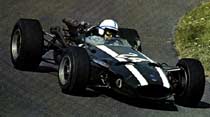 |
Cooper T86B - 1968
Chassis: full length monocoque with inboard disk brakes
Engine: BRM V12 of 3 litre
Drivers: Lucien Bianchi, Vic ELford, Brian Redman, Ludovico Scarfiotti, Johnny Servoz-Gavin, Robin Widdows
Results: Ô68: 6th WCC |
 |

Cooper Maserati T51
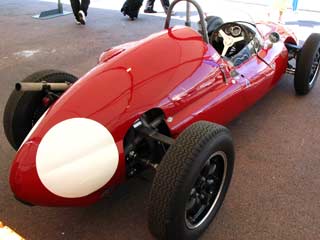 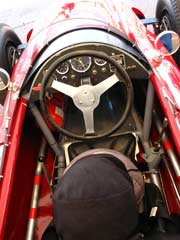 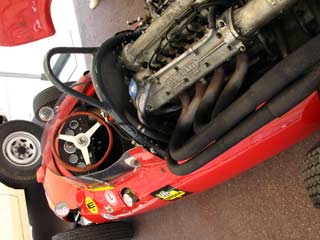 |
| |
|
 THE MONACO GRAND PRIX LIBRARY BY ROY HULSBERGEN
THE MONACO GRAND PRIX LIBRARY BY ROY HULSBERGEN


















